 © Rodrigo Duran Bahamon
© Rodrigo Duran Bahamon- DATE: December 13, 2022
Though the world faces two existential crises—a rapidly warming planet and declining biodiversity—and continues to battle a global pandemic, conservation still made major strides toward protecting wildlife, wild places, and people in 2022.
From nearly tripling wild tiger numbers in Nepal to securing the permanent protection of 79 million acres in the Amazon rain forest, there’s much to celebrate as WWF works alongside partners and supporters to stop the destruction of nature and restore it where we can.
Take a look at this year’s conservation highlights.
World strikes agreement to stop biodiversity loss
In a big win for biodiversity, countries struck a global agreement to halt and reverse nature loss by 2030. Agreed to by more than 190 states under the UN Convention on Biological Diversity, the new Montreal-Kunming Agreement establishes a Global Biodiversity Framework, including a global target to conserve at least 30% of lands, inland waters, and oceans worldwide. It also makes clear that conservation work must be carried out in a way that respects the rights and knowledge of Indigenous peoples and local communities and recognizes their leadership.
Securing Colombia’s heritage by protecting the nation’s landscapes and seascapes
A new Project Finance for Permanence initiative called Herencia Colombia—which translates to Heritage Colombia—will support Colombia to both maintain and increase the protections of the nation’s landscapes and seascapes. The Herencia Colombia PFP (also known as HECO) secures the lasting conservation of 79 million acres of new or expanded areas in the heart of the Amazon, the San Lucas Mountains, the Central Andes, the Orinoco Transition, and the Caribbean Coast, and helps establish further marine protected areas in the Caribbean and Pacific. The launch of new protections in Colombia, combined with existing safeguards in other regions, secures the permanent protection of 12% of the entire Amazon rain forest.
Critically endangered Arctic foxes successfully breed in Finland
For over 25 years, Arctic foxes have not bred in Finland—until this year. Arctic fox nesting inspections revealed the species to have successfully bred in the Enontekiö mountainous area in Northern Lapland. Three pups had been born to an Arctic fox couple. The return of cyclic fluctuations in small rodent populations in mountainous areas and the joint Nordic Arctic fox monitoring and conservation work both likely contributed to this success.

© Joe Buglewicz/WWF-US
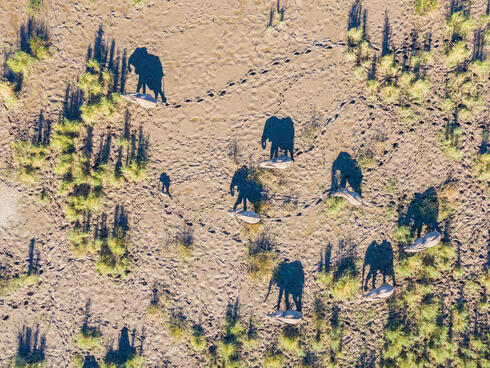
© PATRICK BENTLEY
WWF’s Farmers Post pilots program that delivers fresh produce to doorsteps and helps stop food waste
A WWF program called Farmers Post, piloted by the local platform Healthy PlanEat, uses the US Postal Service to provide same-day or next-day delivery of orders of fresh-picked vegetables. In addition to adding convenience for consumers, Farmers Post can help to eliminate food loss. Each year, an estimated 10 million tons of specialty crops—a third of what’s grown in the US—never get harvested or make it off the farm, accounting for about 16% of total US food loss and waste. Relying on local sources of food also cuts down on the additional heat-trapping greenhouse gas emissions caused by cross-country shipping of farm products grown elsewhere.
First-ever coordinated aerial elephant survey completed in KAZA
With support from WWF and partners, the first-ever synchronized and coordinated aerial survey of Africa’s largest savanna elephant populations was completed at the end of October in the five countries that make up the Kavango Zambezi Transfrontier Conservation Area (KAZA) The data is currently being analyzed and results are expected to be released in early 2023. The survey will provide baseline data on the numbers and distribution of elephants in KAZA to help inform the development of collective policy and practice among the KAZA partner countries for the long-term conservation, protection, and management of Africa’s largest contiguous elephant population.
 © Brian Adams / WWF-US
© Brian Adams / WWF-USAn Alaska Native community in Bristol Bay protects its land, fishery, and culture from the ruinous Pebble Mine
Alaska’s Bristol Bay watershed—including the world’s largest wild sockeye salmon run—has for more than a decade contended with the looming threat of Pebble Mine, a proposed copper-gold-molybdenum mining project located in the headwaters of the Kvichak and Nushagak Rivers, two of the eight major rivers that feed Bristol Bay. Developers of the mine have exploited nearly every legal, governmental, and public relations avenue to keep the project alive. But now a historical decision by Native landowners, in conjunction with a landmark proposal by the US Environmental Protection Agency, could finally end the Pebble Mine project for good. More than 23,000 WWF supporters signed on to encourage the protection of the rivers, streams, and wetlands that support the salmon fishery and a subsistence-based way of life that has sustained Alaska Native communities for generations. And in December, WWF, with partners at The Conservation Fund and other members of the Bristol Bay Victory Challenge, announced the successful establishment of a 44,000-acre conservation easement protecting four of the world’s most important rivers for salmon habitat. These easements will permanently protect land owned by the Pedro Bay Corporation, an Alaska Native corporation, and will bisect the road proposed by Pebble Mine developers.
New map helps prioritize conservation actions in North America’s Central Grasslands
The Central Grasslands Roadmap, a collaborative partnership established to increase the conservation of North America’s Central Grasslands, is comprised of leaders and experts that live and work across this 600-million-acre region, which includes the Northern Great Plains. In 2022, collaborative released the Central Grasslands Assessment Map, which was produced under the guidance of WWF’s Northern Great Plains Science Team. Over the last three years more than 200 partners from Canada, the United States, Mexico, and the region’s Native nations collaborated and informed the map, which is to be used by everyone from local communities to government agencies, industry, and funding entities to prioritize conservation actions. The map emphasizes the paramount importance of maintaining and expanding core areas of intact grasslands, to allow wildlife to flourish, mitigate climate change, provide food security, and support livelihoods and traditional cultural values for rural communities and Native nations.

© Shutterstock
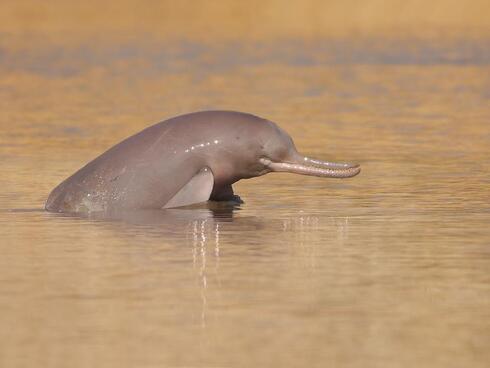
© WWF-Pakistan
UN takes step toward ending plastic pollution
The United Nations Environment Assembly unanimously agreed to develop a legally binding treaty to end plastic pollution, taking one of the world’s most ambitious environmental actions since the 1989 Montreal Protocol, which effectively phased out ozone-depleting substances. The adopted UN resolution outlines the development of a robust treaty that allows for global rules and obligations across the full life cycle of plastic. This will hold nations, businesses, and society accountable for eliminating plastic pollution from our environment. Nearly 800,000 WWF-US supporters sent messages to the US government and global leaders calling for a legally binding treaty to address the plastic crisis.
First-ever satellite tagging of river dolphins in Asia
In a major boost to the conservation of the endangered Indus river dolphin, WWF experts in collaboration with the Sindh Wildlife Department safely tagged three dolphins in Pakistan with satellite transmitters in January. The satellite tags will allow scientists to build an accurate picture of the activities of these dolphins, which only surface for a very short time to breathe. The data will hopefully help to answer many vital questions, including how they use different habitats, how effectively they travel through the large irrigation barrages on the river, how far they move in a day, and if there is any difference between the movement patterns of males and females.
 © EMMANUEL RONDEAU/WWF-US
© EMMANUEL RONDEAU/WWF-USMajor report makes clear connection between forests and human health
Forests are indispensable to human health: Their protection, management, and restoration support disease regulation, nutrition, and more. A new WWF report, The Vitality of Forests, justifies why the public, policymakers, and private sector should be interested in forests’ role beyond their recreational, carbon sequestration, or biodiversity conservation potential. The evidence demonstrates that public health and forests are entwined—at the local, regional, and global scale—and that across each of nature’s contributions to human health, forest conservation, protection, and management can improve human lives.
Significant legislation to combat the climate crisis signed into law
The Inflation Reduction Act offers up more than $350 billion in historic investments that would set the United States on a solid path toward reaching its climate goals, including dedicated funding for home energy rebates, onshore clean energy manufacturing, climate-smart agriculture, and bolstering coastal areas and habitats impacted by the climate crisis, among other promising areas. The provisions of the Act set the US up to meet more than 40% of its agreed-upon commitment under the Paris Agreement. A new report from America Is All In—a project co-led by WWF—shows that action from non-federal climate leaders can close the gap and successfully meet Paris goals. WWF supporters sent nearly 25,000 messages to elected officials in support of WWF’s work on the bill.
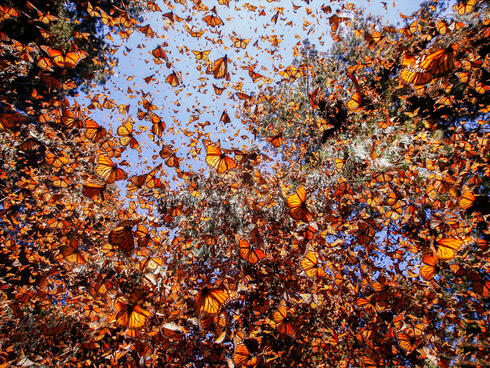
© NATUREPL.COM/SYLVAIN CORDIER/WWF
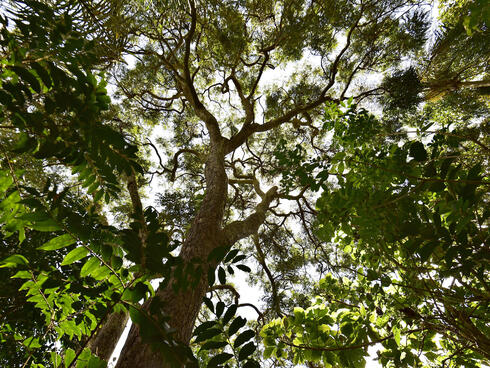
© Adriano Gambarini/WWF-US
Eastern migratory monarch butterfly population shows signs of recovery
The presence of monarch butterflies in Mexico’s forests last winter was 35% greater than the previous year, according to the survey led by WWF Mexico with the collaboration of local communities, Mexican scientists and authorities, and the financial support of donors. The monarch’s butterfly increase marks a sign of recovery—albeit a fragile one—and gives some reason for hope against a backdrop of several decades of decline for the iconic species. The species’ presence in and around Mexico’s famed Monarch Butterfly Biosphere Reserve grew from 5.19 acres in December 2020, to 7.02 acres in December 2021.
Nepal nearly triples wild tiger population
A 2022 survey revealed that there are 355 individual wild tigers now in the country, a more than 190% increase since 2009. It’s an incredible achievement and testament to the conservation efforts of the government, partners, and local communities over the last 12 years. In 2009, Nepal had a wild tiger population of approximately 121 individuals and their numbers were decreasing. Determined to restore Nepal’s roar, the country joined the global commitment to doubling its wild population by 2022.
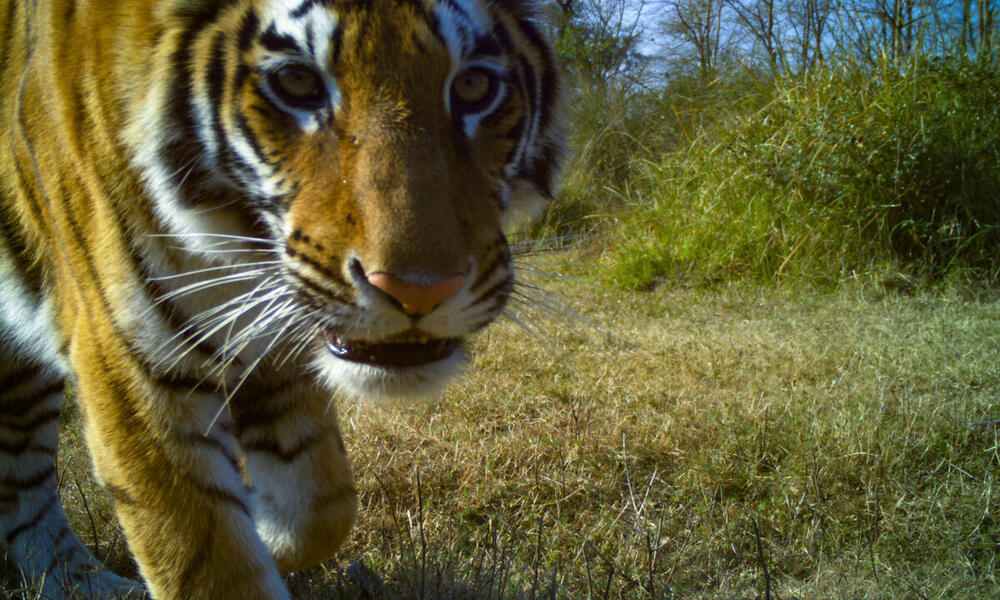 © WWF-Nepal
© WWF-NepalIn a win for wild tigers, President Biden signed into law major legislation against wildlife crime
The US Senate passed legislation that will help prevent captive tigers from ending up in the illegal trade of their parts and products—a primary threat to big cats in the wild. President Biden signed the Big Cat Public Safety Act into law on Dec. 21. The bill will also help ensure the welfare of captive big cats and public safety by requiring facilities to obtain a federal permit for big cat ownership. Through these actions, we will have more information on who owns them, when they’re sold or traded, and what happens to their parts when they die. Nearly 690,000 WWF-US activists have sent messages to Congress championing tighter regulations and stronger protections for captive tigers.
Four years of successful work for WWF’s Elephant Ivory Initiative
This past June, WWF’s elephant ivory initiative came to an end after more than four years of successful work focused on shutting down Asia’s elephant ivory markets. The initiative was built on the game-changing decision by China in 2017 to shutter its domestic market for elephant ivory. To seize the opportunity offered by the ivory ban, WWF launched a global initiative to close ivory markets in Asia and reduce the demand for ivory among Chinese consumers. The initiative involved two tightly linked and mutually reinforcing approaches, focusing on reducing consumer demand and on policy engagement to strengthen laws and law enforcement. WWF was one of the key architects, part of a collective drive alongside non-governmental organizations, governments, businesses, and other global partners.
WWF and HP accelerate forest protection, management, and restoration in key landscapes in Australia, Brazil, and Peru
As a part of WWF and HP Inc.’s expanded forest conservation partnership to help protect, restore, and improve the management of nearly 1 million acres of forest, our collaboration will accelerate forest protection and restoration efforts in Brazil’s Atlantic Forest, a global biodiversity hot spot and home to some of the last jaguar populations on Earth. We will also accelerate conservation efforts in two new landscapes: Madre de Dios in Peru, near the headwaters of the Amazon River basin, and the forests of eastern Australia, home to endangered koalas and other species that have been severely impacted by recent wildfires. Work in these three critical landscapes totals nearly 450,000 acres.
- IN THIS STORY:
Leave a Reply